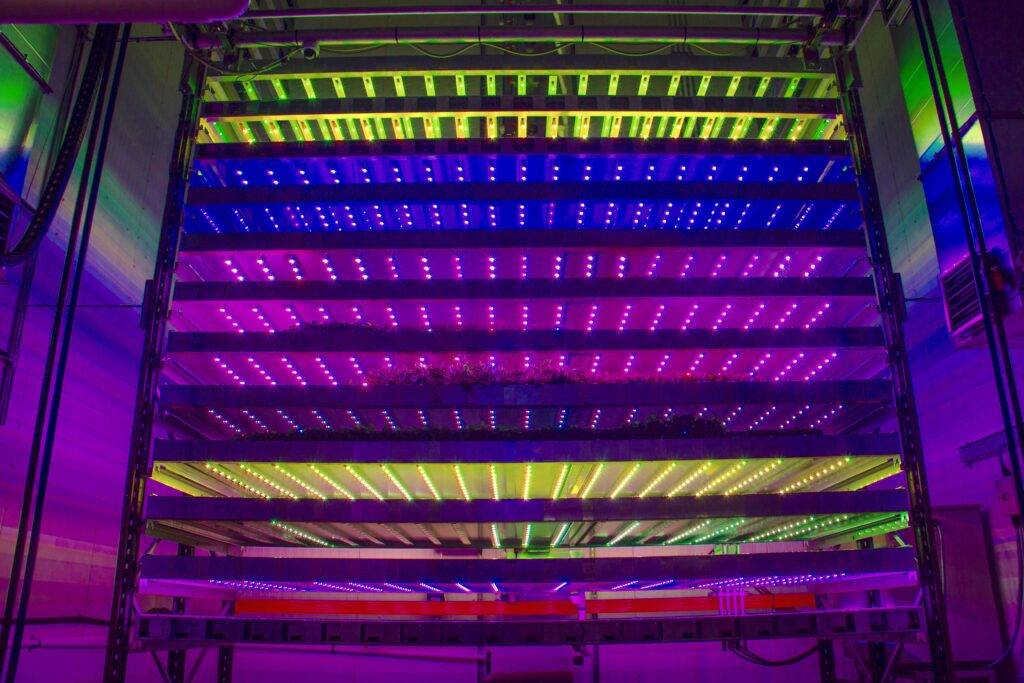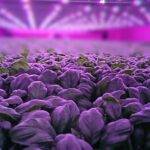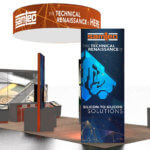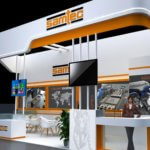In the first article of this series about vertical farming, we looked at the trends that have led to the emergence of this new technology. The challenges of a growing global population, climate change and competing uses for agricultural land mean that farmers are looking for alternative ways of producing food. Vertical farming is one approach to solving this problem by using urban or industrial spaces to grow crops.
In this article, we will look at some of the technology that is making the vertical farm a reality. The agricultural industry has always been an advanced industry, and so it should come as no surprise that vertical farming uses interesting and exciting methods to solve its unique challenges.
The key feature of the vertical farm is that it exists far from the conventional agricultural environment. This is one of its most appealing features – a vertical farm can be established in almost any available space, including disused subways or metro tunnels, empty industrial buildings, or even empty shipping containers. Creating a working farm in the heart of a city, far from any normal farm, means that food can be produced amid the population that needs it. With food security an increasing concern globally, communities can use vertical farming to help take back control of their own needs.
Growing crops in these artificial spaces means creating the conditions in which plants can thrive. This presents both a challenge and a benefit. The challenge should be clear – the environment that the plants need to be healthy will be entirely man-made. Everything from light and water to nutrients and the atmosphere itself will need to be managed carefully.
Intelligent Growth Solutions Limited (IGS) is an innovator in the world of vertical farming. Based in Scotland with a worldwide reach, IGS has developed the Growth Tower, a vertical farm that replaces soil with racks of trays stacked up to 12 meters high to maximise the output of every square meter. Crops are grown and fed using advanced techniques, with plants gaining the nutrients they need from their roots which are flooded with a nutrient solution on a schedule set by software-controlled automated growth recipes.

Growth Towers by IGS
Of course, water and nutrients are not the only thing that plants need. The other critical element is sunshine which is vital to the photosynthesis that makes plants grow. The latest LED technology provides an alternative to direct sunlight, and IGS has developed a Total Controlled Environment Agriculture (TCEA) platform that integrates all these elements to manage indoor farming. It doesn’t matter if this farm is deep underground or in enclosed buildings, as artificial lighting takes the place of the sun.
Protected from unpredictable weather and growing seasons, the vertical farm is a fully managed environment that can produce food year-round. Technology controls the growing conditions, ensuring the perfect combination of light, temperature and humidity at each stage of the crop’s growth. Yield is maximised while resources are used efficiently. Food can be grown at any time of year, mere meters from the very population that will consume it.
When compared to conventional farms, the Growth Tower can produce far more food on a tiny percentage of the floor area. Unlike in open fields, water that is not taken up by crops can be collected and reused, meaning that crops can be grown using just a fraction of the volume of water required by a conventional farm. The location of the vertical farm can be chosen to reduce the carbon footprint, making supply and logistics simpler.
The environment within the vertical farm creates challenging conditions for electronic components. The humidity and temperature require components that are designed to provide superior reliability in tough conditions. To achieve a robust system, IGS has deliberately chosen to utilise components that have proven their performance in other industries. When it comes to connectors, products designed for the tough conditions of the automotive market or telecommunications infrastructure are delivering the performance that IGS needs to support its ground-breaking technology.
At the heart of Samtec is service which allows it to support innovators like IGS with rapid development and the latest interconnection products designed for the harshest environments. Samtec is proud to partner with IGS to deliver superior service and innovative connector solutions to support the latest developments in vertical farming.
The vertical farm is a truly modern solution. Growing food in the heart of the city, using far fewer resources than conventional farming, just meters from the people who will eat the crops, will help to reduce our impact on the natural environment. Using patented technology and with the support of innovative component manufacturers like Samtec, IGS is creating robust solutions that will play a key role in the future of global food security.
Vertical farming is not the ultimate solution to our future food needs. Some crops simply cannot be grown using vertical farming techniques, and so there will still be a place for conventional farming, although the smart agriculture revolution is bringing the latest technology to “ordinary” farming. However, vertical farming offers the opportunity for cities to take control of their own food needs in a new and exciting way.



Leave a Reply